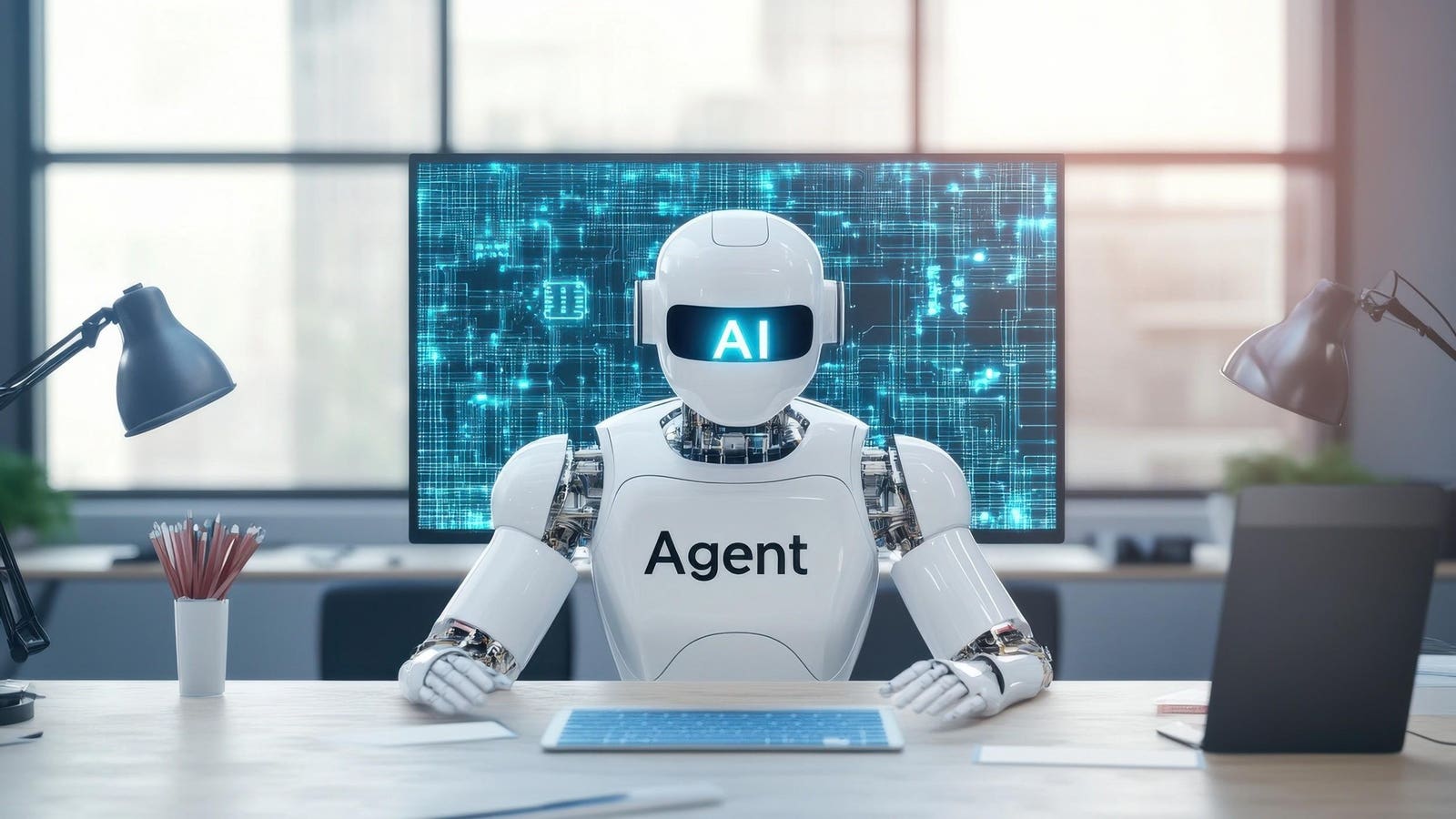Innovation and Technology
How AI Agents Will Revolutionize Your Day-To-Day Life

First Of All, What Is An AI Agent?
Most people are familiar with generative AI, like ChatGPT, which creates text and images based on prompts. AI agents can be seen as an evolutionary leap forward – they don’t just respond to prompts; they take action, completing complex tasks with minimal intervention from us.
Everyday AI Agents
How will these agents fit into everyday life, and what sort of jobs will they help us with? Well, in theory, most of the tasks that we currently accomplish now using search engines and apps could eventually be done for us by agents. This could include online shopping, personal fitness, travel planning, managing our social calendars and controlling the ever-growing number of connected gadgets and appliances in our lives.
Autonomous Robots That Don’t Need Humans? What Could Go Wrong?
The very concept of enabling machines to make decisions and take action without input from us clearly throws up a number of red flags. From the obvious, like hoping it won’t spend all our money unwisely, to the more insidious – can we really be sure it’s acting with our best interests at heart?
Conclusion
AI agents are set to usher in enormous change, which will be evident in many aspects of our day-to-day lives, just as it will be at the vanguard of science and enterprise. While no technology as transformative as this comes without challenges, it’s clear that AI agents have the potential to profoundly impact the way humans interact with technology.
FAQs
- What is an AI agent?
An AI agent is an advanced form of artificial intelligence that can take action on our behalf and carry out complex tasks with minimal human intervention. - What can AI agents help us with?
AI agents can help us with online shopping, personal fitness, travel planning, managing our social calendars, and controlling the growing number of connected gadgets and appliances in our lives. - What are the potential challenges of AI agents?
AI agents may pose challenges such as ensuring that they act with our best interests at heart, and that they don’t inadvertently harm or inconvenience others. - How will AI agents impact our daily lives?
AI agents will have a profound impact on the way we interact with technology, potentially automating many tasks that we currently do ourselves.
Innovation and Technology
Turn GenAI Possibilities into Reality

Turning GenAI Possibilities into Reality
The Right Questions to Ask
When I talk to B2B leaders about their generative AI (genAI) adoption efforts, I hear a mix of frustration, FOMO, and skepticism. Many feel stuck. They’re unsure whether their organization is behind, and they suspect other leaders have cracked the code. They also field tough questions about the ROI of adoption efforts. But the conversation quickly shifts when they ask the most impactful questions: "What can we do with where we are today? Are there practical steps we can take now to turn possibility into reality — or even a quick win?"
Fix the Engine Before Your Competitors Do
GenAI can’t deliver real business value if a foundation is broken. Too many B2B organizations are trying to layer genAI on top of scattered, siloed, and outdated technologies, data, and processes. As a result, they can’t connect the right insights, automations stall, and teams are unsure of how to apply genAI beyond basic tasks. The B2B organizations that move ahead will be the ones that fix their engine — creating the right mix of technology, data, and processes — before their competitors do.
Close the AI Literacy Gap to Unlock Real Impact
When I speak to leaders, they often assume that their teams will know how to apply genAI to their work, but the reality is very different. Without AI literacy, employees hesitate, unsure of where genAI adds value or questioning whether they’re "doing it right." As one senior AI operations leader at a leading B2B technology company put it, "Whatever communication, enablement, or change management efforts you think you’ll need, plan on tripling them." Organizations that succeed with genAI don’t just introduce new tools. They over-communicate, over-enable, and over-invest in change management to ensure that teams have the confidence, skills, and context to integrate genAI into their daily workflows. Prioritize ongoing training and learning opportunities with hands-on experimentation and clear guidelines to accelerate adoption and move beyond surface-level efficiency gains for transformation.
Make Collaboration Your GenAI Advantage
The majority of genAI success stories that I hear aren’t from isolated teams. They’re happening where marketing, sales, product, customer success, IT, and legal teams are collaborating with shared data, shared goals, and a clear genAI strategy. These teams also work closely with their vendors, agencies, tech providers, and partner ecosystem so that they can move faster and do the right things together. Leaders who foster alignment, break down silos, and create a culture of AI-driven innovation across their ecosystem are the best positioned to win.
Conclusion
Leaders can turn genAI possibilities into reality by tackling the fundamental challenges that still hold them back. By fixing the engine, closing the AI literacy gap, and making collaboration a key strategy, B2B organizations can achieve real value today and be prepared to adapt to future genAI advancements.
FAQs
- How can I turn my genAI possibilities into reality?
- Fix the engine by creating the right mix of technology, data, and processes.
- Close the AI literacy gap by prioritizing ongoing training and learning opportunities.
- Make collaboration a key strategy by fostering alignment and breaking down silos.
- What can I do to avoid getting lost in the genAI hype?
- Focus on practical steps and quick wins.
- Prioritize fixing the engine and closing the AI literacy gap.
- Make collaboration a key strategy.
Register to Attend Forrester B2B Summit North America
To gain practical strategies to help your organization move forward without getting lost in the hype, register to attend Forrester B2B Summit North America.
Innovation and Technology
The Digital Leader: How Technology is Changing the Way We Lead and Operate in a Digital Age

Introduction
In today’s fast-paced digital age, the way we lead and operate is undergoing a significant transformation. With the rise of technology, leaders must adapt to new strategies and tools to stay ahead of the curve. In this article, we’ll explore the world of tech-enabled leadership strategies, examining how technology is reshaping the way we lead and operate.
The Rise of Digital Leadership
With the proliferation of digital technologies, the role of leaders has evolved. Gone are the days of traditional, hierarchical leadership styles. Today, leaders must be agile, adaptable, and able to navigate the complexities of the digital landscape.
The Shift to Distributed Leadership
One of the most significant shifts in leadership is the move towards distributed leadership. This approach involves empowering team members to take ownership of specific areas, fostering a sense of autonomy and responsibility. As a result, leaders must be willing to cede control and trust their teams to make decisions.
The Power of Data-Driven Decision Making
Another key aspect of digital leadership is the reliance on data-driven decision making. With access to vast amounts of data, leaders can make informed, data-backed decisions, rather than relying on intuition or anecdotal evidence. This shift requires leaders to be comfortable with numbers and analytics, as well as able to interpret complex data.
The Impact of Technology on Leadership
Technology is having a profound impact on the way leaders operate. From collaboration tools to project management software, technology is streamlining processes and enabling greater flexibility and mobility.
The Rise of Virtual Teams
One of the most significant consequences of technology on leadership is the rise of virtual teams. With the ability to communicate and collaborate remotely, leaders can assemble teams from around the world, harnessing diverse skill sets and perspectives. However, this requires leaders to be adept at building trust and fostering a sense of community in virtual spaces.
The Importance of Digital Literacy
As technology continues to evolve, leaders must possess digital literacy skills to stay ahead of the curve. This includes understanding the latest software and tools, as well as being able to navigate complex digital ecosystems. Leaders must be willing to continuously update their skills and knowledge to remain relevant in the digital age.
Conclusion
In conclusion, the world of leadership is undergoing a significant transformation, driven by the rapid pace of technological change. To succeed in this new landscape, leaders must be agile, adaptable, and willing to evolve. By embracing tech-enabled leadership strategies, leaders can harness the power of technology to drive innovation, increase efficiency, and build strong, agile teams. It’s time to adapt, innovate, and thrive in the digital age.
FAQs
Q: What does the rise of digital leadership mean for traditional leadership styles?
A: Traditional, hierarchical leadership styles are being replaced by more distributed, collaborative approaches that empower team members to take ownership of specific areas.
Q: How can leaders develop their digital literacy skills?
A: Leaders can develop their digital literacy skills by staying up-to-date with the latest software and tools, attending workshops and training sessions, and seeking guidance from IT professionals or digital experts.
Q: What are the benefits of data-driven decision making?
A: Data-driven decision making enables leaders to make informed, data-backed decisions, reducing the risk of bias and improving the accuracy of their decisions.
Q: How can leaders build trust and foster a sense of community in virtual teams?
A: Leaders can build trust and foster a sense of community in virtual teams by prioritizing open communication, setting clear expectations, and encouraging regular check-ins and feedback.
Innovation and Technology
FBI Alert Issued As Time Traveling Hackers Attack—Act Now

How Time Travel And The FBI Are Mixed Up In Medusa Attacks
A Quick Recap of the Medusa Ransomware Attacks
Medusa, a type of ransomware, has been known to impact at least 300 critical infrastructure targets. It uses social engineering and unpatched software vulnerabilities as part of its exploit campaign. The FBI has issued a critical security advisory, outlining tactics, techniques, and procedures, indicators of compromise, and detection methods associated with the Medusa attacks.
Time Travel Hacking Technique
Boris Cipot, a senior security engineer at Black Duck, revealed that Medusa attackers are creatively abusing system misconfigurations in their efforts to bypass security controls. The attackers have been using a time travel hacking technique, which involves changing the system date to a time when a security certificate, which signed a certain driver, was still valid. This allows the attackers to load the expired driver, which would normally be rejected by the system.
Mitigating the Time Travel Hackers
To mitigate this kind of time travel hackery, Cipot advised that organizations need a combination of best-in-class endpoint protection, strict policy enforcement, and proactive monitoring. Detection of system configuration changes is also essential, as it’s the system time changes that proved central to the failure of security protections in the case of the Medusa attacks. Additionally, Windows should be configured to enforce strict revocation checks for signed drivers, blocking the expired certificates.
FBI’s Advice on Mitigating Medusa Attacks
The FBI has advised users to:
- Enable two-factor authentication for all services where possible, particularly for webmail, virtual private networks, and accounts that can access critical systems.
- Employ long passwords on all accounts that require them.
- Refrain from imposing a requirement for frequent password changes.
- Keep all operating systems, software, and firmware up to date.
- Patching should be prioritized for internet-facing systems where a known vulnerability is concerned.
- Identify, detect, and investigate any abnormal activity that could indicate a potential network traversal of the ransomware.
- Monitor systems for unauthorized scanning and access attempts.
- Filter network traffic to prevent unknown or untrusted actors from accessing remote services on internal systems.
- Audit all user accounts with administrative privileges and configure access controls according to the principle of least privilege.
- Disable command-line and scripting activities and permissions along with all unused ports.
Conclusion
It’s clear that the Medusa attacks are a serious threat to critical infrastructure targets. The use of a time travel hacking technique is a new and innovative way for attackers to bypass security controls. It’s essential that organizations take the FBI’s advice and take proactive measures to mitigate the risk of a Medusa attack.
Frequently Asked Questions
Q: What is Medusa ransomware?
A: Medusa is a type of ransomware that uses social engineering and unpatched software vulnerabilities as part of its exploit campaign.
Q: How do attackers use time travel hacking?
A: Attackers use a time travel hacking technique, which involves changing the system date to a time when a security certificate, which signed a certain driver, was still valid.
Q: How can I protect my systems from Medusa attacks?
A: Enable two-factor authentication, employ long passwords, keep all operating systems, software, and firmware up to date, and patching should be prioritized for internet-facing systems where a known vulnerability is concerned.
-

 Career Advice4 months ago
Career Advice4 months agoInterview with Dr. Kristy K. Taylor, WORxK Global News Magazine Founder
-

 Diversity and Inclusion (DEIA)4 months ago
Diversity and Inclusion (DEIA)4 months agoSarah Herrlinger Talks AirPods Pro Hearing Aid
-

 Career Advice4 months ago
Career Advice4 months agoNetWork Your Way to Success: Top Tips for Maximizing Your Professional Network
-

 Changemaker Interviews3 months ago
Changemaker Interviews3 months agoUnlocking Human Potential: Kim Groshek’s Journey to Transforming Leadership and Stress Resilience
-

 Diversity and Inclusion (DEIA)4 months ago
Diversity and Inclusion (DEIA)4 months agoThe Power of Belonging: Why Feeling Accepted Matters in the Workplace
-

 Global Trends and Politics4 months ago
Global Trends and Politics4 months agoHealth-care stocks fall after Warren PBM bill, Brian Thompson shooting
-

 Global Trends and Politics4 months ago
Global Trends and Politics4 months agoUnionization Goes Mainstream: How the Changing Workforce is Driving Demand for Collective Bargaining
-

 Training and Development4 months ago
Training and Development4 months agoLevel Up: How Upskilling Can Help You Stay Ahead of the Curve in a Rapidly Changing Industry



















